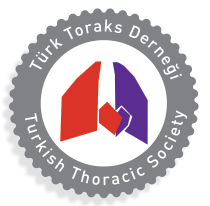Abstract
Objectives:
Balance is a complex skill and muscle strength is an important component of the balance. In COPD patients it was shown that respiratory muscle strength can affect the balance. But to the best of our knowledge, there has been no study investigating the relationship between static and dynamic balance variables and respiratory muscle strength and functional exercise capacity in pulmonary hypertension (PH). The aim of this this study was to examine the role of respiratory muscle strength and functional exercise capacity in static and dynamic balance assessments in PH.
Methods:
Thirty patients with PH were included in this study. Respiratory muscle strength (the maximal inspiratory (MIP) and expiratory (MEP) pressures) were measured using a mouth pressure device. Functional exercise capacity was determined by the 6-minute walk test (6MWT). Balance was evaluated by a system. Static balance was assessed by the modified Clinical Test of Sensory Interaction (mCTSI) on Balance and Limits of stability test was used for the dynamic balance assessment. Reaction time (RT), movement velocity (MVL), directional control (DCL), endpoint excursion (EPE), and maximum excursion (MXE) composite values were used for Limits of stability test variables.
Results:
Significant relationships were found between the mCTSI and MEP and 6MWT distance (p<0.05). There was a significant relationship between MVL and MEP (p<0.05), EPE and MIP 6MWT distance (p<0.05), MXE and 6MWT distance (p<0.05), DCL and MIP, 6MWT distance (p<0.05).
Conclusion:
This study showed that there was a relationship between static balance and exercise capacity and expiratory muscle strength and there was a relationship between some of the dynamic balance parameters with respiratory muscle strength and functional exercise capacity. Comprehensive assessment of balance in patients with PH should include an assessment of respiratory muscle strength and functional exercise capacity.



